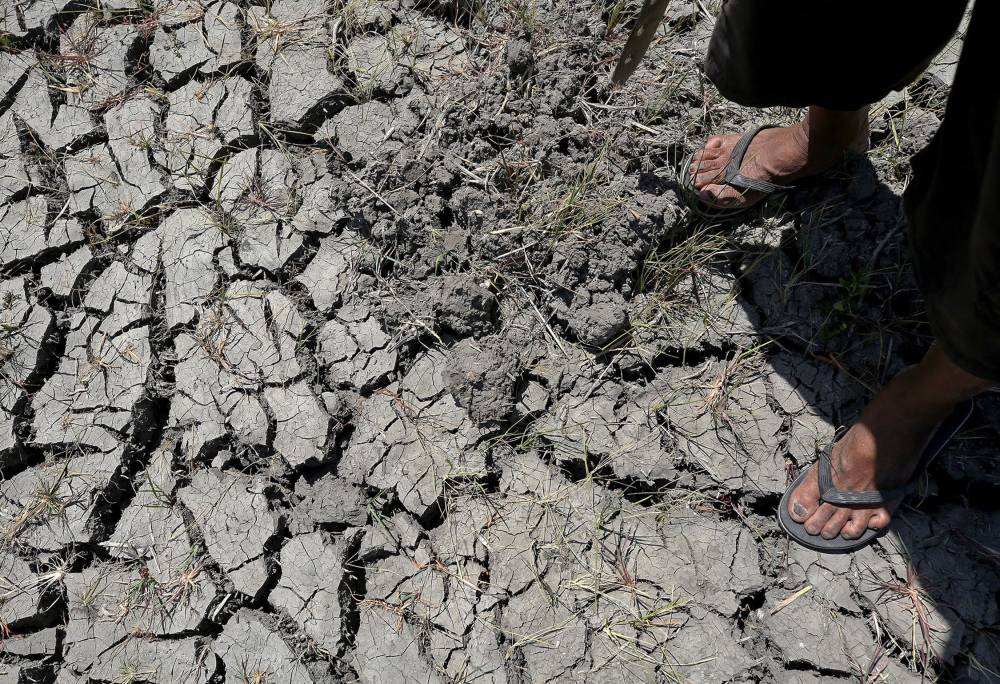Mitigating El Niño, La Niña impact

The mayors of Iloilo City in Iloilo province and Bacolod, Kabankalan, and Enrique B. Magalona in Negros Occidental and four towns in Albay ordered the suspension of classes as intense heat soared to “extreme caution” and “danger” levels of as high as 43 degrees Celsius, putting students at risk of dehydration and heat stroke.But if you think it’s already sizzling now, think again, as temperatures are expected to further rise as the El Niño weather phenomenon blazes on.
By May, the Department of Science and Technology expects 54 provinces or 66 percent of the country to suffer from drought—from 48 in April—which means below normal rainfall conditions for five consecutive months or way below normal rainfall conditions for three consecutive months.
This will spawn a wide range of negative effects from heightened risk of wildfires to the spread of disease, not to mention that it will wreak havoc on agricultural production.
Blistering heat
The blistering heat will dry up water sources and wide swathes of agricultural areas, especially those who depend solely on rain to water their fields and grow their crops. In turn, this will ratchet up prices of key crops such as rice, cultivation of which requires copious amounts of water.Already the Bangko Sentral ng Pilipinas and the National Economic and Development Authority (Neda) have sounded the alarm over the outsized impact of extended dry conditions on prices of basic commodities.
“The potential impact of a strong El Niño weather pattern on food prices is a significant concern for our community,” said Neda Secretary Arsenio Balisacan, adding that high “transportation costs, electricity rates, and volatile oil markets are putting pressure on household finances.”Such urgency must be displayed by the entire government machinery, from President Marcos himself to his Cabinet, down to the chief executives of local government units that will be hit hard not just by El Niño but its opposite, La Niña.
Above-normal rainfallIndeed, Science and Technology Secretary Renato Solidum Jr. has declared that there is as much as a 62-percent chance that La Niña will start to develop by June.This direct opposite of El Niño is characterized by above-normal rainfall, more intense monsoon activity plus possibly stronger, and more frequent typhoons toward the latter part of the year, not to mention the resulting floods and landslides in already economically vulnerable areas across the country.
“There is always the possibility of destructive typhoons, not only in terms of strong winds but also potentially heavier rainfall, so that is what we need to prepare for given the combined effects of the incoming La Niña and the fading El Niño pattern,” said Ana Liza Solis, climate monitoring chief at the Philippine Atmospheric, Geophysical, and Astronomical Services Administration.Mr. Marcos had assured the public that his government would implement an array of measures to deal with the varying effects of El Niño as well as La Niña on different provinces.
Task Force El Niño
He started with the issuance of Executive Order No. 53 in January providing for the revival of Task Force El Niño, which is mandated to update the Strategic El Niño National Action Plan, implement its provisions, and then coordinate with other agencies to ensure the completion of water infrastructure projects by the end of this month to ease the impact of the blazing heat on the land and the people.
More recently, Mr. Marcos officially activated the El Niño Southern Oscillation Online Platform that will give the public accurate information on the potentially devastating weather phenomenon that is expected to persist until next month.
But with the damage mounting—P1.75 billion in crop damage so far—and the mercury rising, the Filipino people must see more decisive actions to assure themselves that the government has a handle on the situation that is already grave and about to become even more serious.
Flood control projectsAs it stands, government response to the El Niño crisis has been found wanting with groups such as peasant organization Amihan describing it as “useless and criminally neglectful,” specifically because of the minuscule promised financial aid of P3,000 to P5,000 to farmers seeing their land dry up.
Indeed, the Marcos administration must rack its brains with the help of partners in the private sector as well as the international and local agencies to mitigate the effects of these weather disturbances that disproportionately affect the marginalized populations including smallholder farmers who till rain-fed fields.
Aside from ensuring the prompt completion of the water projects, it should also take the time before the onset of La Niña to complete flood control projects and strengthen local government units’ capability to cope with these natural disasters by investing in disaster response and mitigation measures. These investments may seem steep but inaction and lack of strategies would cost far more in the end.

















